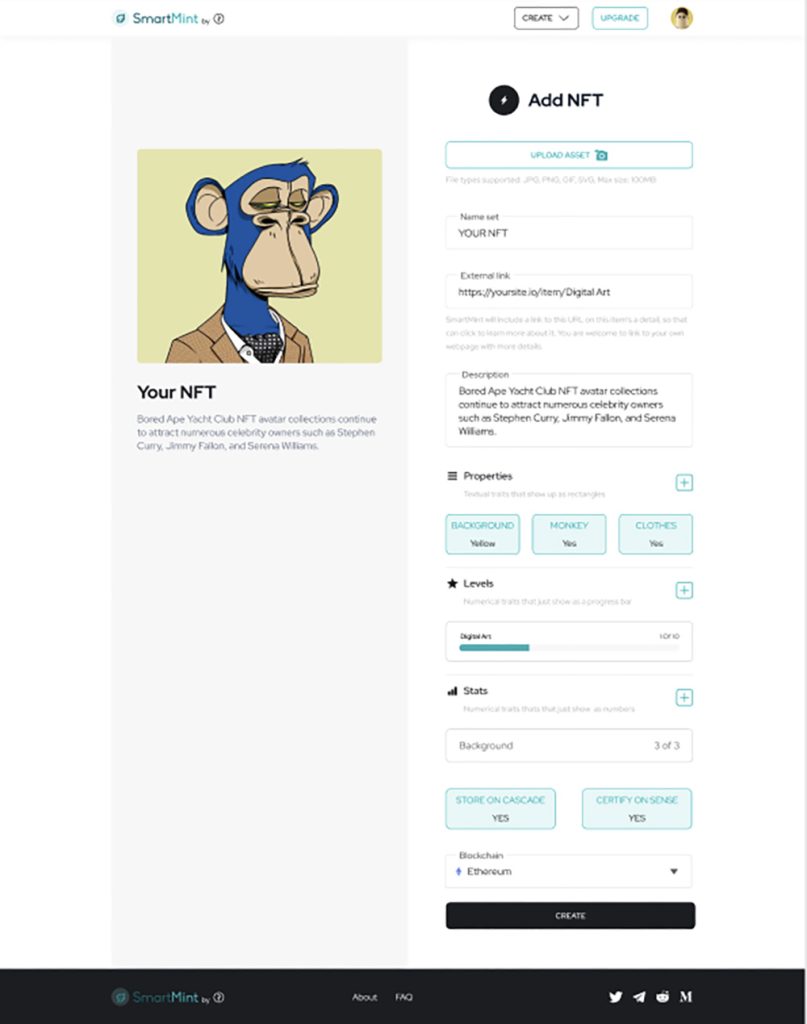Non-fungible tokens (NFTs) have taken the blockchain space by storm. Ever since the introduction of the technology, many artistic minds and creators began exploring the blockchain space for opportunities through which they could monetize their content.
On the other hand of the spectrum, their fans, as well as collectors, utilized the opportunity provided by NFTs to purchase, and thus gain ownership of the work.
However, for artists who are just getting started with NFTs, the blockchain space can be intimidating and difficult to understand, especially if they have no prior knowledge of programming or are not particularly enthusiastic about technology.
Today, there are more solutions than ever before that can enable these creators to venture into the NFT ecosystem without ever having to write a single line of code. Let’s explore one of these solutions that enable creators to create, mint and manage NFTs in a very simple and intuitive way – SmartMint, an NFT creation platform built by Pastel Network.
The NFT Creation Process
Non-fungible tokens (NFTs) are created when an asset is tokenized or minted. Minting is the process of publishing a unique digital asset on top of the public ledger, known as the blockchain so that it can have the functionality of being bought, sold, traded, or even fractionalized.
NFTs are minted through smart contracts that assign ownership and manage their overall transferability. Whenever someone creates or mints an NFT, they execute code that is stored within the smart contracts, which need to conform to specific token standards.
This information is then added to the blockchain, which manages the NFTs.
Why People Are Intimidated By Coding
Typically, getting into smart contract coding can be difficult for anyone unfamiliar with programming.
For example, on the Ethereum network, there are two token standards intended for NFTs. ERC-721 and ERC-1155. People would typically need to study and learn the two smart contract coding languages used on Ethereum, which include Solidity and Vyper.
However, many creators, or artists, have already dedicated a huge portion of their life towards mastering the skill of creating art. Thus, learning a whole new skillset just to create NFTs can discourage them from venturing into the NFT ecosystem. Or, in the event they do decide to enter the space, the programming aspect may put a huge strain on their time and resources – if they have to hire a developer or attempt to learn it themselves.
The ”programming” being referred to is for the smart contracts that are required for the creation of NFTs. They execute at the point in time when predetermined conditions are met. They are coded with numerous functions and data, which reside at a specific address on the blockchain.
Additionally, creators can use third-party solutions to min NFTs. However, when one is used, the third-party provider retains ownership over the smart contract created for the NFT.
Creators that aim to maintain full ownership of their NFTs will need to customize and mint their own smart contracts. This allows them to retain full control and ownership over the minted NFTs.
So, without programming knowledge, how can artists make their creations and mint them as NFTs? This is where SmartMint can help.
Getting Into No-Code NFT Creations with SmartMint
SmartMint is an NFT creation platform built by Pastel Network that allows any creator to simply upload their work, add custom properties and attributes, and then select the network on which to mint their NFT, without any coding necessary.
SmartMint can enable creators to retain full ownership over their smart contracts, which is not something available across other solutions.
There are two main features that make SmartMint stand out, and these include the Sense Protocol and the Cascade Protocol.
Any artist can run their NFT through Pastel’s Sense Protocol, which is a near-duplicate NFT detection system that measures the relative rareness of NFTs and provides other analysis, to certify the authenticity of their NFTs. This will add an additional layer of security to an artists’ works.
Then there’s Cascade, which is a revolutionary storage solution that allows users to permanently store their NFT data and metadata, on-chain, with only a one-time payment (i.e. a network transaction fee.
All that creators are required to do is upload the asset, after which they can mint them and securely store the metadata whilst also calculating the uniqueness score.
Once all of this has been completed, they can list their NFTs on secondary NFT marketplaces and even receive royalties on each further sale.
There are numerous format types supported, including PNGs, JPGs, SVG, GIF files, and .MP4 videos.
Leaping Ahead of The Competition
While many artists and creators thought that they needed to learn complex programming or coding languages to get their art listed on an NFT marketplace and retain full ownership over their smart contracts, this is no longer the case.
Solutions such as SmartMint enable this functionality with ease and serve to be a one-stop-shop solution for creating NFTs, minting them, and placing them on marketplaces without the need to write a single line of code in the process.


